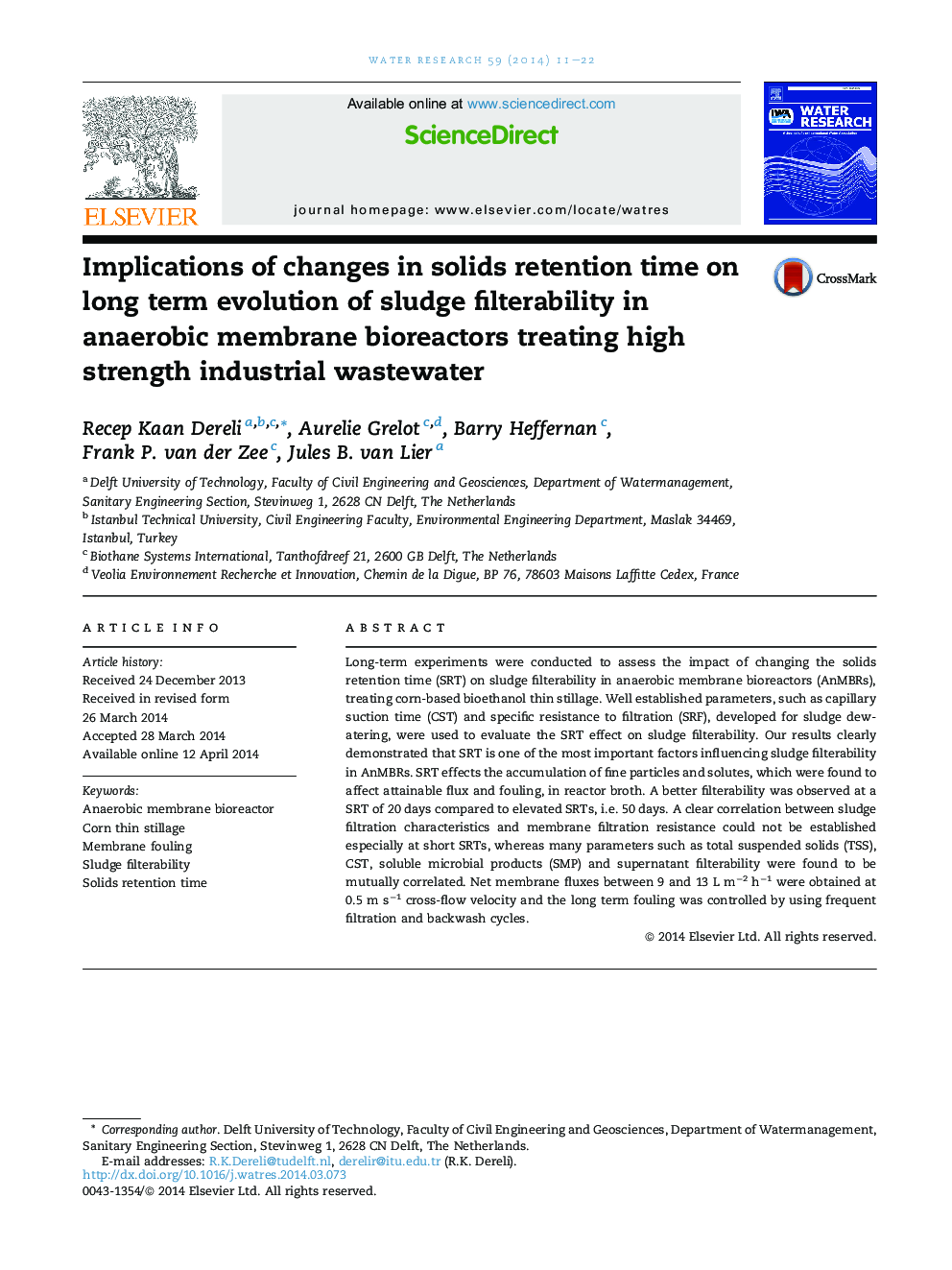| Article ID | Journal | Published Year | Pages | File Type |
|---|---|---|---|---|
| 4481522 | Water Research | 2014 | 12 Pages |
•Accumulation of colloids and solutes in AnMBRs can be limited by SRT optimization.•Better sludge filterability was observed at 20 days SRT compared to elevated SRTs.•Sludge physicochemical characteristics correlated well with sludge filterability.•Gross membrane fluxes between 10 and 14 L m−2 h−1 were obtained at 0.5 m s−1 CFV.
Long-term experiments were conducted to assess the impact of changing the solids retention time (SRT) on sludge filterability in anaerobic membrane bioreactors (AnMBRs), treating corn-based bioethanol thin stillage. Well established parameters, such as capillary suction time (CST) and specific resistance to filtration (SRF), developed for sludge dewatering, were used to evaluate the SRT effect on sludge filterability. Our results clearly demonstrated that SRT is one of the most important factors influencing sludge filterability in AnMBRs. SRT effects the accumulation of fine particles and solutes, which were found to affect attainable flux and fouling, in reactor broth. A better filterability was observed at a SRT of 20 days compared to elevated SRTs, i.e. 50 days. A clear correlation between sludge filtration characteristics and membrane filtration resistance could not be established especially at short SRTs, whereas many parameters such as total suspended solids (TSS), CST, soluble microbial products (SMP) and supernatant filterability were found to be mutually correlated. Net membrane fluxes between 9 and 13 L m−2 h−1 were obtained at 0.5 m s−1 cross-flow velocity and the long term fouling was controlled by using frequent filtration and backwash cycles.
